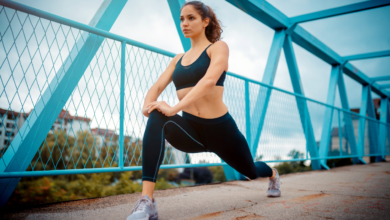Downward-Facing Dog (Adho Mukha Svanasana)
Downward-Facing Dog (Adho Mukha Svanasana): A Comprehensive Guide

This pose helps regulate blood sugar levels and improves circulation.
What will be the benefits of Downward-Facing Dog (Adho Mukha Svanasana) in PCOD/PCOS ?
Downward-Facing Dog is a versatile yoga pose that offers numerous benefits for women with PCOS:
- Improved Circulation: This pose can help improve blood circulation, which can positively impact hormonal balance.
- Reduced Stress: It can help reduce stress and anxiety, which can contribute to hormonal balance.
- Increased Flexibility: Downward-Facing Dog stretches the hamstrings, calves, and spine, improving flexibility.
- Strengthened Core and Upper Body: It strengthens the core, arms, and shoulders.
- Improved Posture: Regular practice of this pose can help improve posture.
How often should I do Downward-Facing Dog (Adho Mukha Svanasana) in PCOD/PCOS?
Aim to practice Downward-Facing Dog 2-3 times per week.
How much time should I do Downward-Facing Dog (Adho Mukha Svanasana) in PCOD/PCOS?
Hold the pose for 30-60 seconds.
What precaution’s to be taken while doing Downward-Facing Dog (Adho Mukha Svanasana) by PCOD patients
· Consult Your Doctor: Before starting any new exercise regimen, especially if you have underlying health conditions, consult with your doctor.
· Listen to Your Body: Don’t push yourself too hard, especially if you feel pain.
· Modify the Pose: If you have wrist or shoulder pain, you can modify the pose by placing a blanket under your knees.
· Warm-up: Warm up your body with gentle stretches and light cardio before practicing this pose.
· Cool-down: Cool down with gentle stretches after practicing the pose.
What we can eat before and after Downward-Facing Dog (Adho Mukha Svanasana) specially for PCOD/PCOS patients
Before Downward-Facing Dog:
- Light Snack: A light snack like a banana or a handful of nuts can provide energy without weighing you down.
- Hydration: Ensure you’re well-hydrated by drinking water.
After Downward-Facing Dog:
- Nutritious Meal: A balanced meal with complex carbohydrates, lean protein, and healthy fats can help replenish energy and support recovery.
- Hydration: Continue to drink water to replenish fluids lost during the practice.





